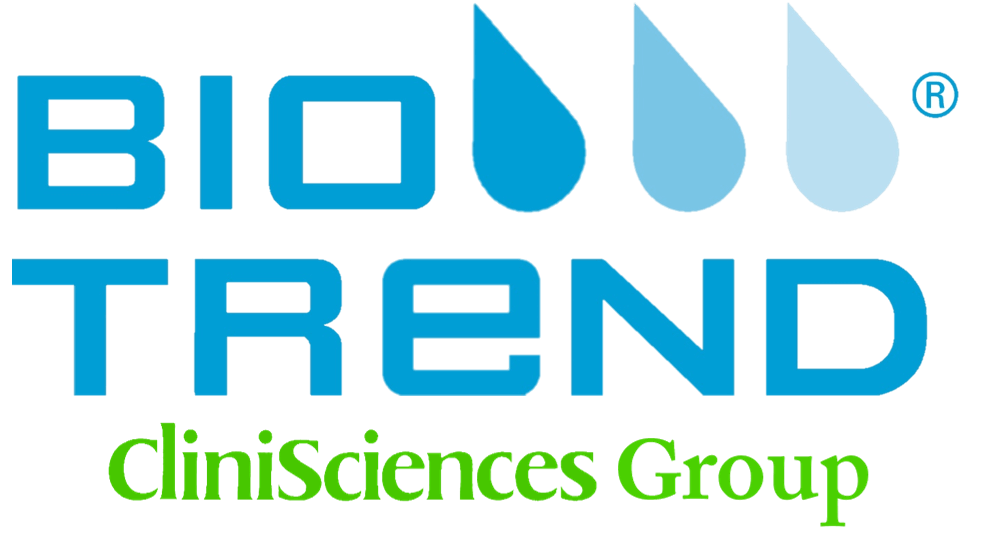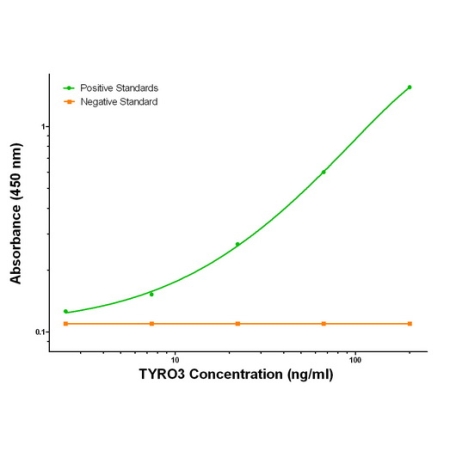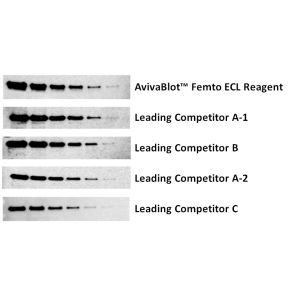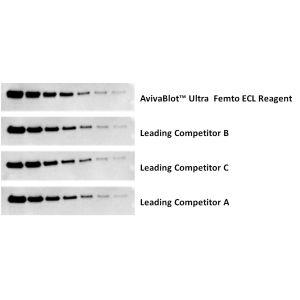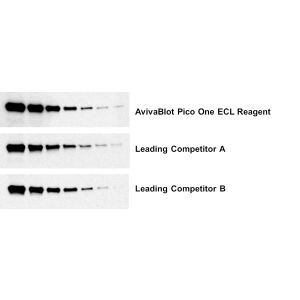TYRO3 Detection Antibody
Cat# OAOA22099
Size : 50ug
Brand : Aviva Systems Biology
| Datasheets/Manuals | Printable datasheet for TYRO3 Detection Antibody : Biotin (OAOA22099) |
|---|
| Predicted Species Reactivity | Human|Mouse|Rat |
|---|---|
| Product Format | Stored in PBS (pH 7.4) with 0.05% sodium azide, 10mg/ml BSA, 50% glycerol |
| Clonality | Monoclonal |
| Clone | OTI9B12 |
| Isotype | IgG1 |
| Host | Mouse |
| Conjugation | Biotin |
| Application | ELISA|MlpxA |
| Additional Information | Matched ELISA Pair: OAOA21641 |
| Reconstitution and Storage | -20°C |
| Immunogen | Full length human recombinant protein of human TYRO3 (NM_006293) produced in HEK293T cell. |
| Concentration | 0.5 mg/ml |
| Dilution | 1:250 - 1:1000 |
| Description | TYRO3 biotinylated mouse monoclonal detection antibody, validated for ELISA and Luminex assays |
| Gene Symbol | TYRO3 |
|---|---|
| Gene Full Name | TYRO3 protein tyrosine kinase |
| Alias Symbols | BYK, Dtk, Etk-2, Rek, RSE, Sky, Tif, tyrosine-protein kinase byk, tyrosine-protein kinase DTK, tyrosine-protein kinase receptor TYRO3, tyrosine-protein kinase RSE, tyrosine-protein kinase SKY, tyrosine-protein kinase TIF. |
| NCBI Gene Id | 7301 |
| Protein Name | Homo sapiens TYRO3 protein tyrosine kinase (TYRO3), transcript variant 1, mRNA|Tyrosine-protein kinase receptor TYRO3 |
| Description of Target | Receptor tyrosine kinase that transduces signals from the extracellular matrix into the cytoplasm by binding to several ligands including TULP1 or GAS6. Regulates many physiological processes including cell survival, migration and differentiation. Ligand binding at the cell surface induces dimerization and autophosphorylation of TYRO3 on its intracellular domain that provides docking sites for downstream signaling molecules. Following activation by ligand, interacts with PIK3R1 and thereby enhances PI3-kinase activity. Activates the AKT survival pathway, including nuclear translocation of NF-kappa-B and up-regulation of transcription of NF-kappa-B-regulated genes. TYRO3 signaling plays a role in various processes such as neuron protection from excitotoxic injury, platelet aggregation and cytoskeleton reorganization. Plays also an important role in inhibition of Toll-like receptors (TLRs)-mediated innate immune response by activating STAT1, which selectively induces production of suppressors of cytokine signaling SOCS1 and SOCS3. |
| Uniprot ID | Q06418 |
| Protein Accession # | NP_006284 |
| Nucleotide Accession # | https://www.ncbi.nlm.nih.gov/nuccore/NM_006293 |
